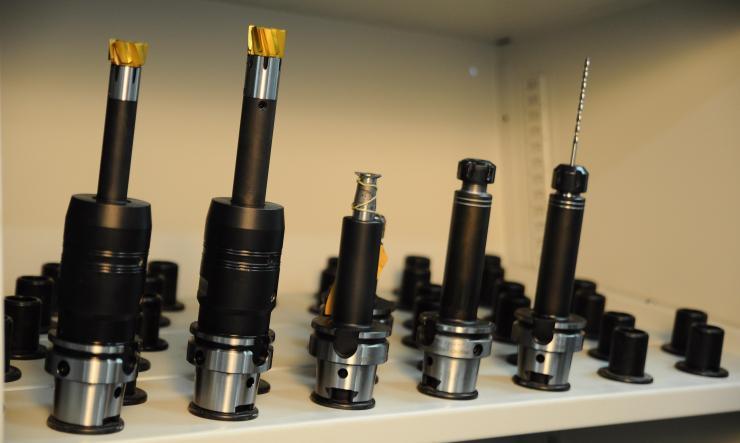JSC "FED" implemented operational production planning and optimized order fulfillment times with IT-Enterprise

| scale | 500+ employees | kpi | to minimize the timing disruptions of production orders execution |
|---|---|---|---|
| Product | Manufacturing | Project time | 1 year |
| year of briefcase | 2017 | geography | Ukraine |
| Industry | Aerospace industry | customer | "FED" |
Project Goals
"FED" plant is a modern mechanical processing enterprise that produces complex modules for the aerospace enterprises. Customers of the company are specialized industrial production companies of the world. Despite the competition in the niche, Ukrainian enterprise has the advantage — high quality of products.
After all, modern customers want to receive high-quality products, in the agreed terms and volumes, produced according to the technological process and at the lowest possible price. In order to retain leadership in such difficult circumstances, the company undergoes continuous improvement of manufacturing processes, investing in the acquisition of new equipment, training plant personnel, and the development of an enterprise management system.
One of the ways to maintain the high quality of the enterprise’s work is to minimize the non-compliance with deadlines of the production orders. This task was solved at the “FED” plant using the tools of an integrated ERP system IT-Enterprise.
Project Description
To maintain technological leadership, the company acquired several modern machine tools. However, it soon became clear that while maintaining the production program, which was adopted earlier, the equipment load level did not exceed 65% when working in two shifts.
Then managers adopted a work in three shifts. That ensured the maximum load of expensive equipment. Company received new production orders and ensured sufficient load of the production site. Then arose the reliability question — after all, when the machine fails, large number of orders fails, and it will take a long time to restore reputation. As a result, second machine was purchased, and the equipment load become insufficient again. To ensure the load of the production site, additional orders were found again.
A few months later the schedule overruns began, a slight decrease in the products quality began to appear. The load increased, and there was a shortage of grinding machines, but it seemed to be organizational difficulties. It’s estimated that equipment load when operating in 3 shifts was about 70%, taking into account the time for changeovers.
At that moment, the company just launched operational planning and production control (MES planning) in the IT-Enterprise ERP system. The implementation project was just in the active phase. Thanks to the planning system, the specialists saw that the loading of the grinding section was maximum.

Results
It’s possible to minimize disruption of production orders by using production planning and control systems. By the time this problem was set at the “FED” plant, the process of an integrated ERP system implementation was already underway. The modules for engineering design, as well as production planning and control have already been implemented, configured and commissioned. With the help of the ERP system, company optimized the operative equipment load (optimal MES planning) and implemented search for “bottlenecks” using E. Goldratt’s Theory of Constraints.
Thanks to the IT-Enterprise ERP system implementation, and more specifically, the operational production planning modules, the “FED” specialists revealed a “bottleneck” that they did not expected. The MES-planning system identified a “bottleneck”, and were undertaken activities to eliminate it. Dates of orders were moved, taking into account the priorities of the plant, the new equipment purchase were planned, personnel reserve to maintain the smooth operation of the site were formed.
With the help of the MES-planning module, the company organized a regular analysis of the production program in order to find new “bottlenecks” in production.
With an automated production planning system a new “bottlenecks” were quickly identified. ERP system enabled company management to avoid disruption of important contracts with the world leading aircraft manufacturers totaling $ 90 million.
A detailed analysis of the production program allowed the management to avoid the purchase of new additional equipment on credit at 20% per annum. This enabled to choose European lending program at 4.5% instead. The total effect over the 7 years of lending will be over 400 thousands dollars.